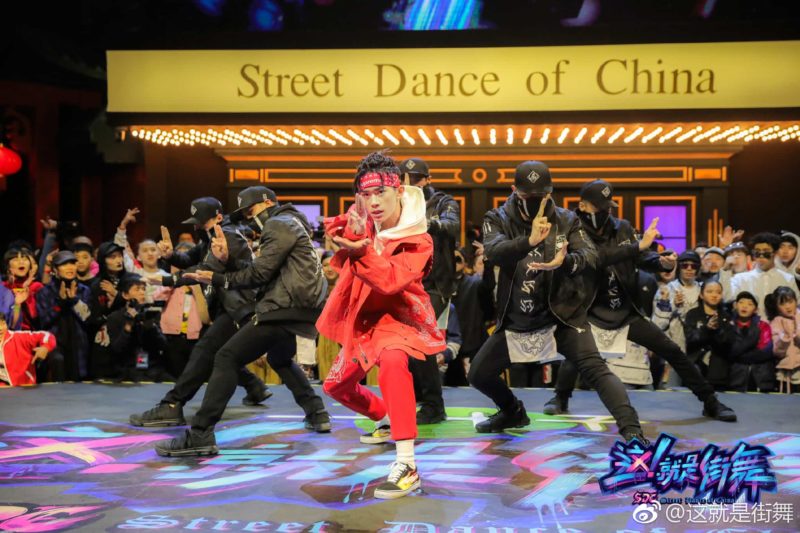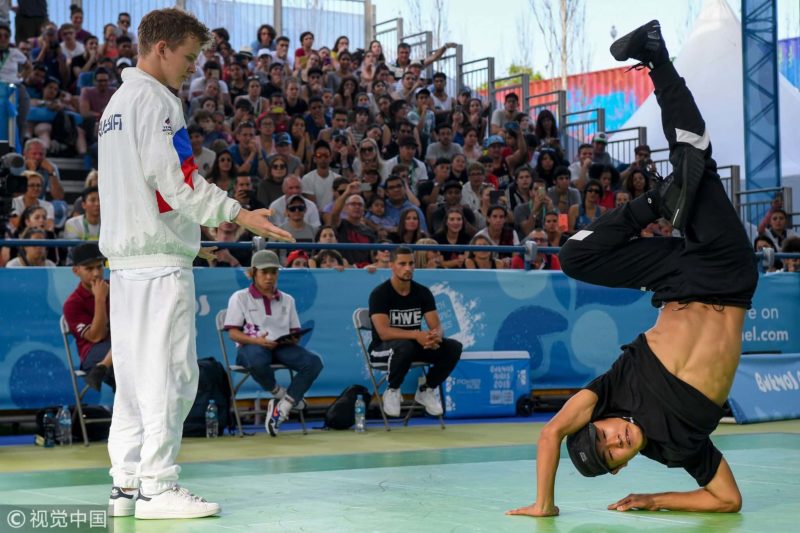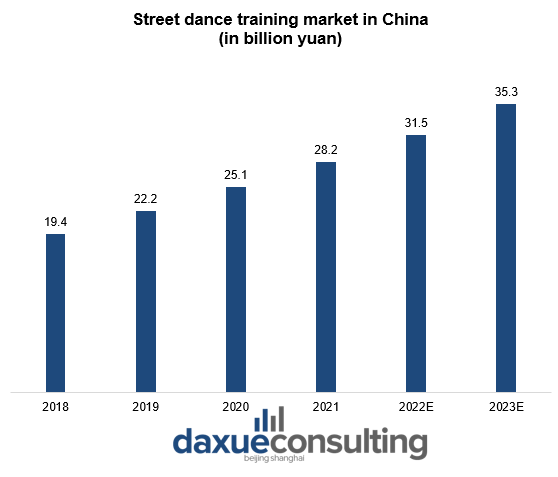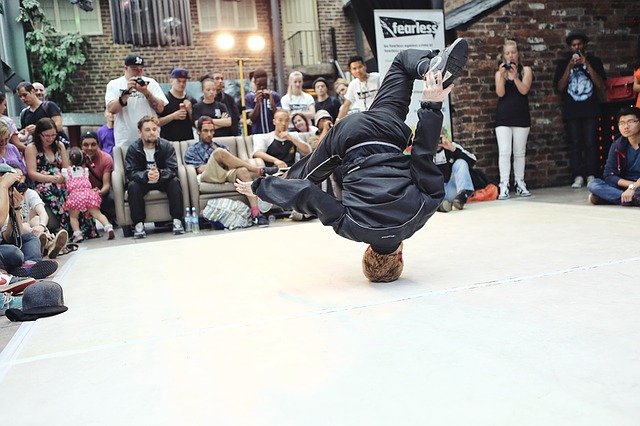On December 7, 2020, the International Olympic Committee held a meeting and agreed to add four major events including breakdancing, skateboarding, surfing, and rock climbing to the Olympic Games. In the movie “Eight Minutes in Paris” shown at the closing ceremony of the 2020 Olympics in Tokyo, breakdancing was first introduced on the stage of the Olympic Games.
In 2021, breakdancing in China entered the list of official competitions of the 14th National Games of the People’s Republic of China. It is the largest national event in the country, bringing together the best athletes. This move shows China’s solidarity with the upcoming Olympic Games in Paris 2024, where it will be an official sport event. Entering the Olympics means entering mainstream and with it comes greater opportunities. More and more Chinese people are getting interested in this sport. According to Baidu Index, the Olympics announcement and a viral video of a senior breakdance teacher contributed to the rise of popularity of breakdancing in China.

The development of breakdancing culture in China

Breakdancing originated in the Bronx, New York in the 1970s. It is a dance style featuring lots of leg movements and rotations on the floor or in the air. In China, breakdancing is called 霹雳舞 or “thunder dance.” It entered the country in the 1980s, together with hip hop and street culture. At that time, a whole generation of Chinese street dance enthusiasts emerged. In the late 1980s, breakdancing in China began to appear in films. For example, the 1988 film Children of Rock and Roll (摇滚 青年), directed by Chinese director Tian Zhuangzhuang and starring dancer Tao Jin, puts great emphasis on creative expression through dance.
How TV shows contributed to the popularity of breakdancing in China
Over the past two years, the breakdancing industry in China has soared thanks to the rapid development of the hip hop and street entertainment industry. Shows such as “Rap of China”, “Hot Blood Dance Crew” and “Street Dance of China” have frequently become hot topics on social media platforms.
As the future of Rap of China is threatened by to the scandal with one of the judges – artist Kris Wu, accused of rape, streaming sites Youku and iQIYI turned to street dancing, and breakdancing in particular. While “Hot Blood Dance Crew” only lasted one season on iQIYI, “Street Dance of China” has grown steadily in popularity, with this third season being its most successful.

The launch of these two shows has created a real breakthrough in breakdancing in China, helping talented dancers reach entirely new audiences and gain media attention. Some of the most popular teams on the show are Wujiawu, Zaha Sugar, and RMB Crew.
Breakdancing is entering official sport competitions in China
As early as 1990, sport dancing was approved by the State Sports Commission and became an official sport in China.
Since 2014, China’s street dance industry has continued to develop, with street dance competitions, educational institutions and entertainment shows have emerged. Breakdancing exams have also appeared more recently. According to the rules of the China Dance Association’s Street Dance Committee, China also has a rating system for different styles of hip-hop dance.

In 2018 China formed a national breakdance team for the first time to prepare for the World Youth Street Dance Championships and Youth Olympics. breakdancing was trialed at the 2018 Youth Olympic Games in Buenos Aires as one of the competitive events, and Chinese Shang Xiaoyu even made it to the quarterfinals of the men’s tournament.
Street Dance League Tournament 2021: big prospects

In July 2021, the Street Dance League Tournament took place in China. This competition has three main parts, namely campus auditions, city and regional qualifiers, and two competitions in breakdancing and freestyle. The best referees and dancers in the industry like 金东Kim、Danny、乔治、Glacial took part in this event. In addition to participating in the 2021 Chinese Street Dance League Professional Tournament, participants also had the opportunity to become members of the China National Breakdancing Team. The competition took place in five regions: Southwest, Central China, East China, Northeast China and South China. Students from key universities in nearly 20 provinces, including Zhejiang, Shanghai, Jiangsu and Sichuan, participated in the street dance competition, showing the rising popularity of street dancing in China.
The street dance training market in China is still relatively small
Currently, there are three methods of generating income with breakdancing in China: competitions, training and professional dancing. However, the main focus is still on the dance education market in China.

The attitude towards street dancing and breakdancing in China is changing for the better. More and more people are embracing street culture and showing a desire to learn street dancing. This contributes to the development of breakdancing in China. However, the street dance training market in China is still relatively small. China Industry Information Network estimates that it will reach 35.3 billion yuan in 2023. According to data provided by the Dancers Association Street Dance Union, there are more than 5,000 street dance training schools nationwide, with a total of 5 million street dance students, and more than 300,000 street dance teachers.
First-tier cities such as, Beijing, Shanghai, and Shenzhen have more than 400 schools; Wuhan and Guangzhou are the second echelon, with about 300 schools; Changsha, Hangzhou, and Chengdu are the third echelon with about 200 schools. According to Street Dance Training Market Research, compared to 2018, the number of offline street dance classes in all regions of the country in 2019 increased by 178%.
Teenagers are the key consumers of the street dance training in China
Chinese street dance focuses mainly on young people. As Western hip hop culture is getting stronger in China, more and more kids are interested to be a part of a street dance club. As street dancing is mostly a group dance, it also cultivates the sense of belonging and helps to build connection with others. Teens aged 10-15 currently account for 80% of all street dance training customers. Therefore, many dance institutions began to switch to cater to the children’s market. This market has a substantial potential: in 2019, there was about 260 million children aged 3-18 as potential customers for dance education in China.
However, street dance training still lacks systematic teaching standards and assessment standards; street dance teachers are mostly part-time, with varying levels of quality, lack of teaching awareness, and no grading standards.
Generational friction between parents and children hinder the breakdance education market
Through social listening, it becomes evident that many Chinese parents have not warmed up to breakdancing. As the sport is often associated with hip-hop or street culture, of which Chinese parents tend to be skeptical, it is an uphill battle for teens to gain their parents’ financial support, let along approval, to participate.
Breakdancing brands need to keep parents in mind when marketing – focusing on the culture in a positive light, such as how it can improve children’s self esteem, health, and social life may better persuade parents.

Key takeaways about China’s breakdancing market potential
- The growing popularity of street culture in China brought the attention to the breakdancing, contributing to the increase of street dance training market for young people.
- The inclusion of breakdancing in the official program of the Olympics 2024 pushed the Chinese government to make it a part of national sports competitions.
- Breakdancing in China still has long way to go, as there are no standards for street dance teachers.
- Chinese parents need to be taken into consideration as their children’s engagement in breakdancing depends on them.
Author: Valeriia Mikhailova





